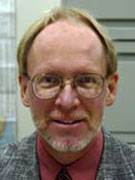 It has been my extreme pleasure to serve this year as the 29th president of the
American College of Clinical Pharmacy. In anticipation of the College’s 30th anniversary
in 2009, I asked the leadership of each PRN to chronicle the history of their PRN
since its inception. For centuries past, humankind has been admonished to share
the stories of the past generations with the current ones so that God’s faithfulness
and humankind’s actions would not be lost. Indeed, the most significant of these
historical events were recorded and became the Torah and the Old Testament of the
Bible. Although I doubt that the history of ACCP’s PRNs will have the impact of
these two works, I do believe that it is fundamentally important for us to know
where we have been and what we have accomplished, who the leaders of the past were,
what the leadership characteristics of these early visionaries were, and why those
who preceded us took us down those paths. Hopefully, the documentation and publication
of these histories will guide the PRNs as they and the College contemplate their
respective roles and interrelationships for the next decade of the College’s existence.
It has been my extreme pleasure to serve this year as the 29th president of the
American College of Clinical Pharmacy. In anticipation of the College’s 30th anniversary
in 2009, I asked the leadership of each PRN to chronicle the history of their PRN
since its inception. For centuries past, humankind has been admonished to share
the stories of the past generations with the current ones so that God’s faithfulness
and humankind’s actions would not be lost. Indeed, the most significant of these
historical events were recorded and became the Torah and the Old Testament of the
Bible. Although I doubt that the history of ACCP’s PRNs will have the impact of
these two works, I do believe that it is fundamentally important for us to know
where we have been and what we have accomplished, who the leaders of the past were,
what the leadership characteristics of these early visionaries were, and why those
who preceded us took us down those paths. Hopefully, the documentation and publication
of these histories will guide the PRNs as they and the College contemplate their
respective roles and interrelationships for the next decade of the College’s existence.
Currently, the criteria for the formation of a new PRN are essentially the same
as when the first ones were founded almost 20 years ago. In the past two decades,
there have been many significant changes in the practice of pharmacy, pharmacy education,
the clinical research enterprise, and the scope and impact of the College on each
of these. Thus, it may be a reasonable time for all ACCP members to consider what
the role of the PRNs should be and how they fit into the College. Several potential
questions worthy of consideration immediately come to mind:
- Is the current requirement for 50 founding members adequate to support a viable
organizational entity?
- Are the current programming opportunities and expectations of PRNs optimal for
everyone, or should larger PRNs have more frequent opportunities than smaller ones?
- Should the College consider a subspecialty PRN structure wherein some PRNs are
aligned with key entities such as the ambulatory care or critical care PRN?
- Should a PRN remain a subspecialty entity until it reaches a critical mass of
members or demonstrates consistent contributions to the College or profession?
- Should PRNs exist for eternity, or should they be put to rest unless defined benchmarks
of member growth or activity/contributions are met?
- Should PRNs be able to collect dues to support their mission beyond the College’s
minimal administrative needs?
There are no preconceived answers to the questions posed above, and I am certain
that they are not the only ones that you and other members of the College have contemplated
as you considered your role in the College’s PRNs. Membership in a PRN provides
each person an avenue to connect with others of like interest, share his or her
patient care experiences, assist one another in the evaluation and management of
unusual or rare clinical cases, and stimulate ideas that may form the hypotheses
for future research. Our PRNs can only be essential to one’s practice and research
considerations if we invest our time and energies in them. Some of our PRNs are
doing exceptionally well, whereas others are struggling. Thus, this may be just
the right time for a “checkup.” These and many other questions are among those that
the Board of Regents and PRN leadership will need to address in the coming months
as they identify what makes a great PRN great and how the structure and function
of those that are struggling can be optimized so that the College enters its 30th
year with a sound PRN foundation. I encourage each of you to ponder these questions
and share your perspectives with me, as well as the leadership of the College and
your PRNs. Together, we must build on our past and forge ahead with vigor, enthusiasm,
and commitment to transform the practice and research contributions of pharmacy
to society.